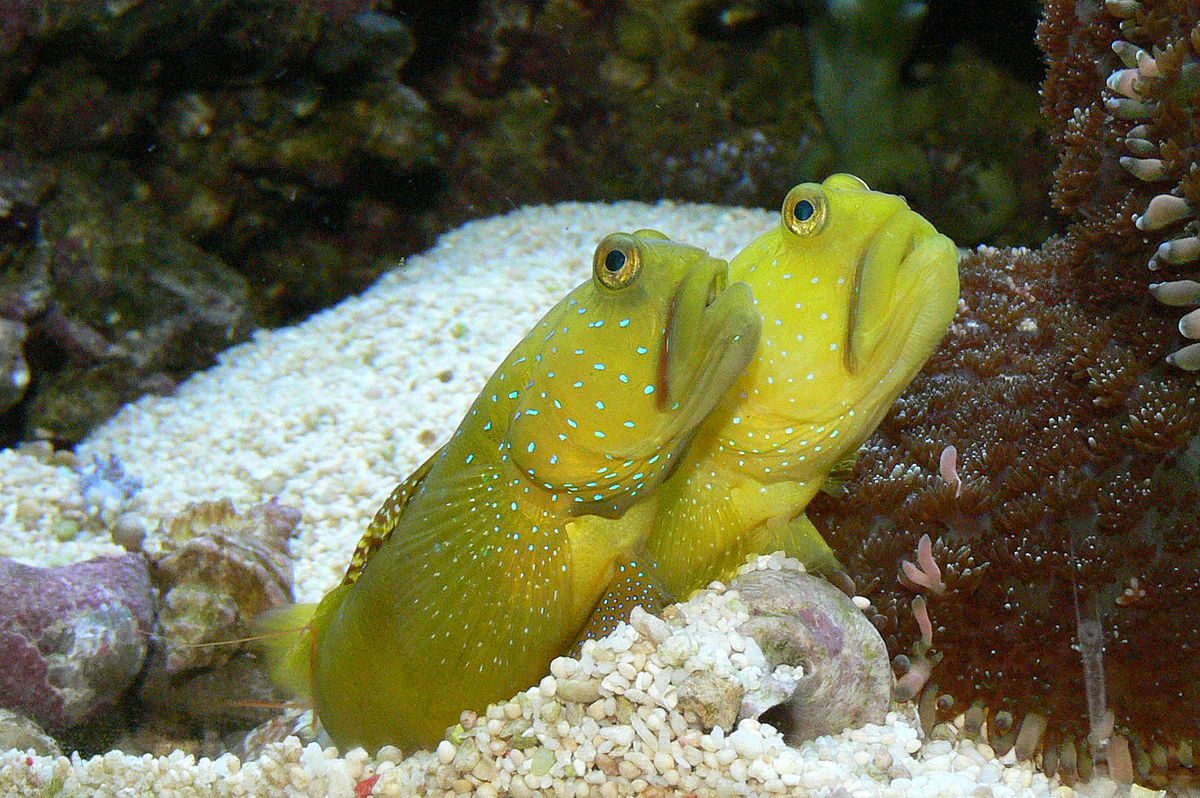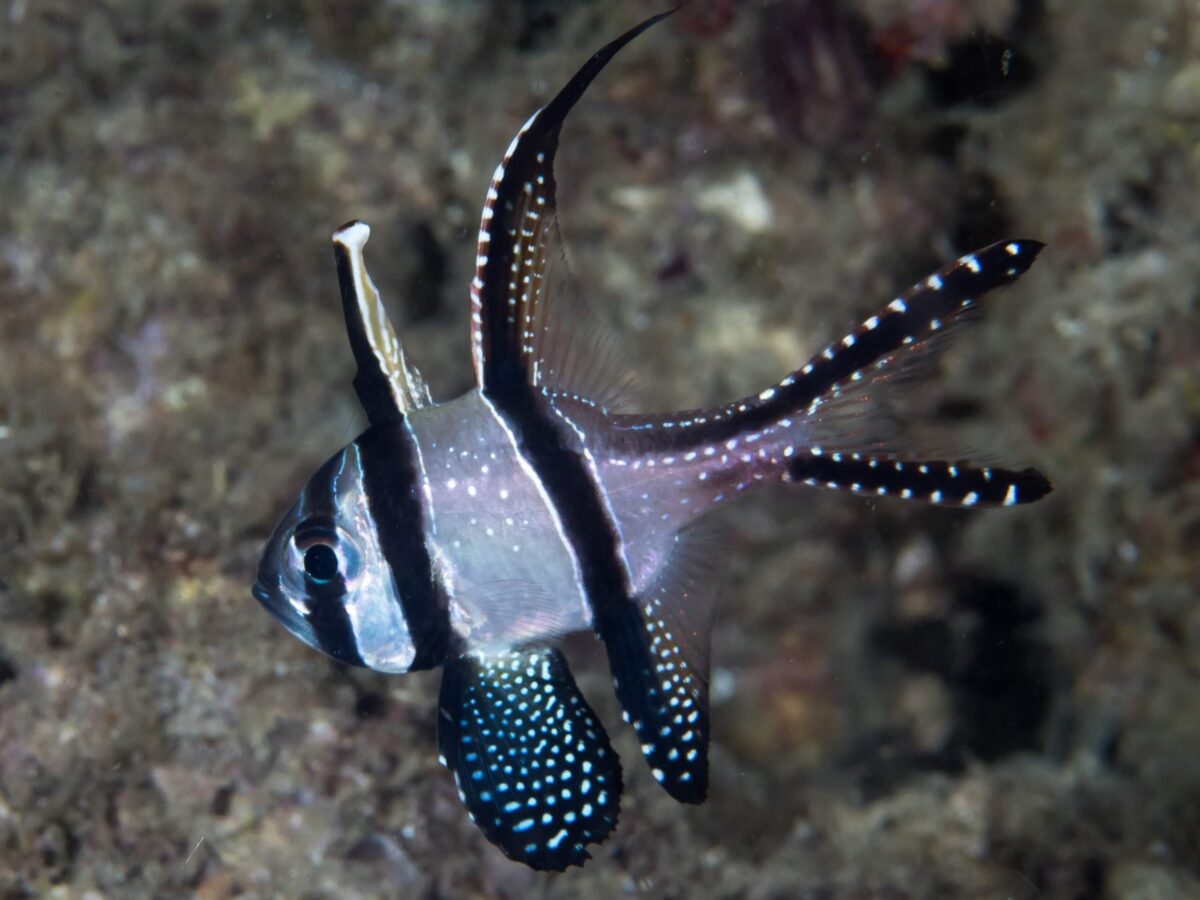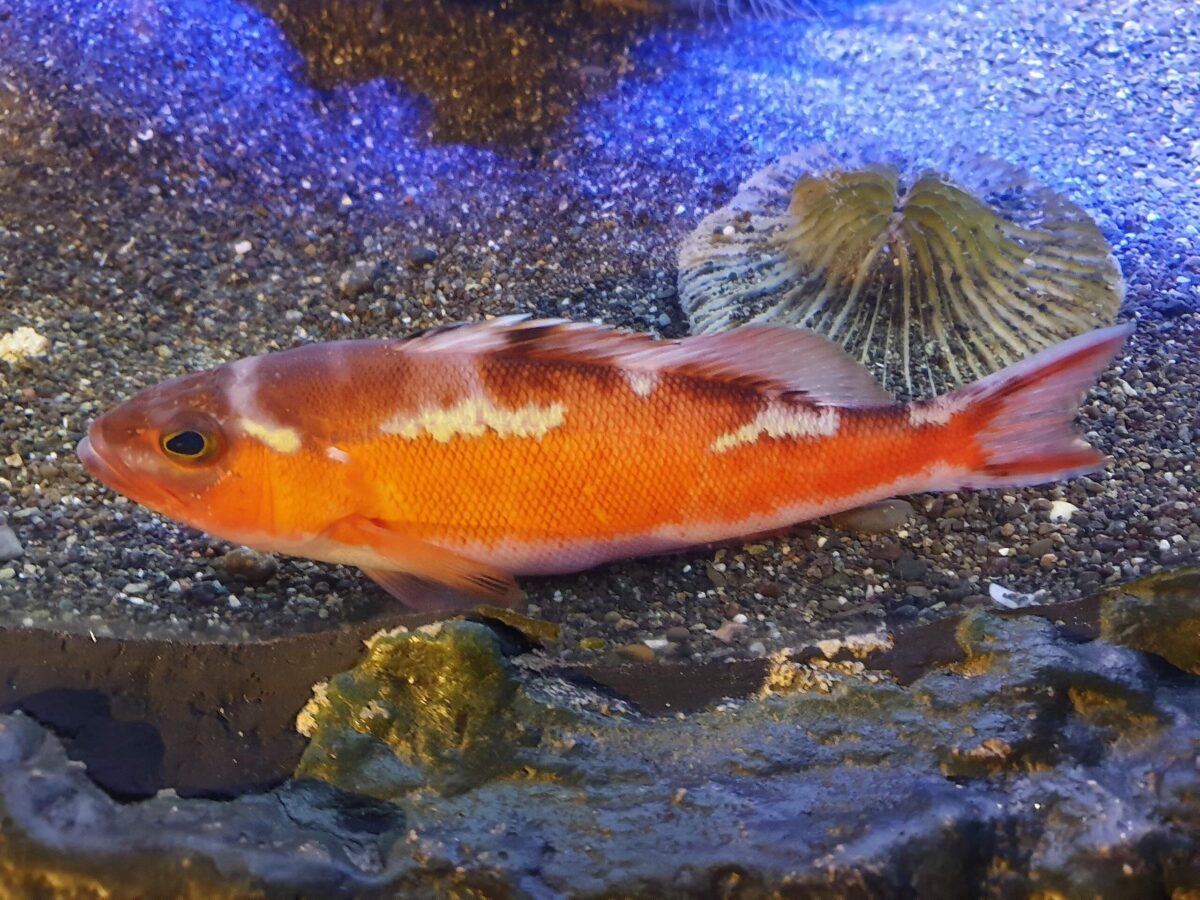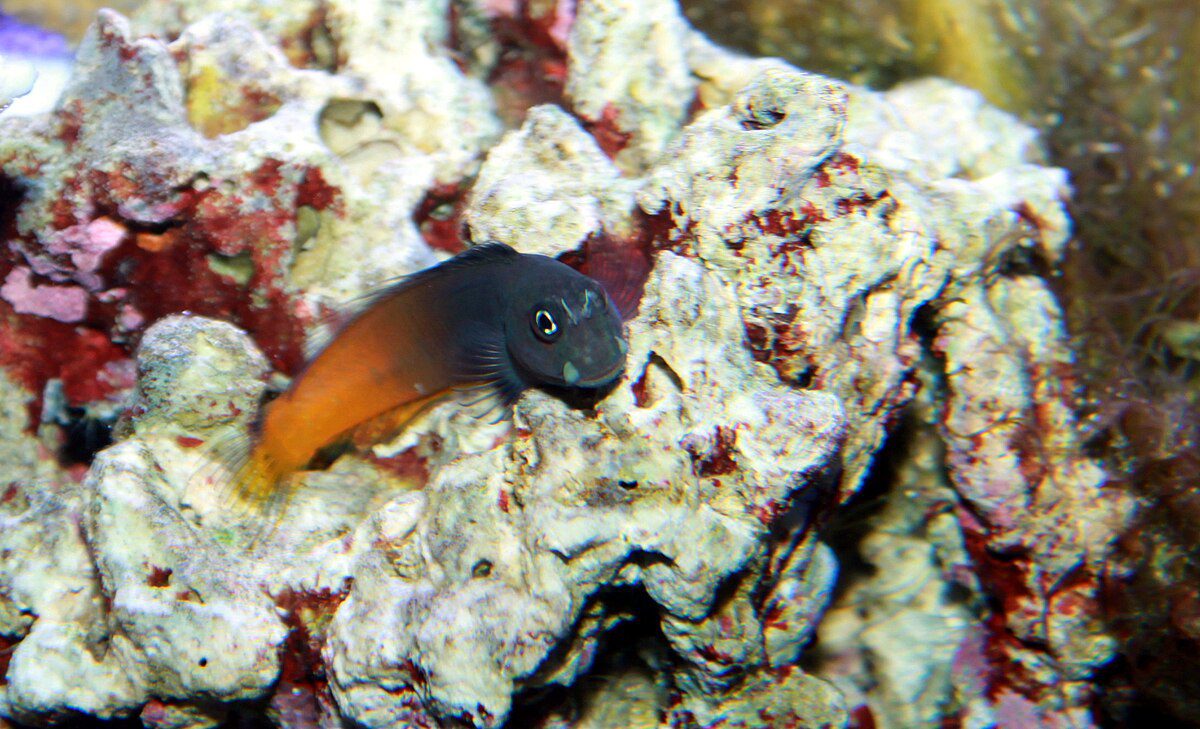Welcome to our species guide on the Blue Green Chromis (Chromis viridis), a popular saltwater aquarium fish known for its vibrant colors and peaceful nature. In this guide, we will explore everything you need to know about caring for this stunning marine species. From its habitat and behavior to its tank requirements and feeding habits, we’ve got you covered. So let’s dive in and discover the fascinating world of the Blue Green Chromis!
Key Takeaways:
- The Blue Green Chromis, also known as Chromis viridis, is a reef-safe damselfish that is a great addition to any community tank.
- These peaceful fish are known for their stunning blue-green colouration and are often seen schooling together in the wild.
- When setting up an aquarium for Blue Green Chromis, it’s essential to provide ample swimming space and recreate their natural marine habitat.
- Feeding these fish a varied diet and ensuring proper water parameters are crucial for their well-being.
- While they are relatively easy to care for, it’s crucial to consider suitable tank mates and potential breeding challenges.
Introduction
Welcome to our comprehensive guide on the Blue Green Chromis (Chromis viridis), a captivating marine aquarium species highly sought by hobbyists. This section will introduce this stunning fish, discussing its taxonomy and classification within the damselfish family. We will also explore its natural habitat and distribution, shedding light on where it can be found in the wild.
Taxonomy and Classification
The Blue Green Chromis belongs to the family Pomacentridae and is scientifically known as Chromis viridis. It is part of the damselfish subfamily Chrominae, which includes other widespread species such as the Yellowtail Blue Damsel and the Azure Damselfish. Its common name, Blue Green Chromis, is derived from its vibrant blue-green colouration.
| Attribute | Description |
|---|---|
| Scientific name | Chromis viridis |
| Common Names | Blue Green Chromis, Green Chromis, Blue Chromis |
| Origin | Indo-Pacific |
| Family | Pomacentridae |
| Social | Peaceful, Schooling |
| Domain in tank | Mid-water swimmer |
| Minimum tank size | 30 gallons (114 liters) |
| Diet | Omnivore |
| Breeding | Spawner, difficult to breed in captivity |
| Care level | Easy |
| pH Range | 8.1 – 8.4 |
| Water Hardness | 8-12 dKH |
| Temperature | 72-82°F (22-28°C) |
| Common Diseases | Marine Ich, Marine Velvet |
| Life Span | 5-8 years |
| Size | Up to 4 inches (10 cm) |
| Best Tank Mates | Clownfish, Damsels (peaceful ones), Wrasses, Gobies |
Natural Habitat and Distribution
The Blue Green Chromis is native to the tropical waters of the Indo-Pacific region, including the Red Sea, the Great Barrier Reef, and the waters surrounding the Maldives. It can also be found in the Indian and western Pacific oceans. These fish inhabit coral reefs, typically congregating in large schools near branching corals or areas with ample hiding spots.
Physical Description and Characteristics
This section will delve into the physical description and characteristics of the Blue Green Chromis (Chromis viridis). These saltwater aquarium fish are highly sought for their vibrant colours, peaceful nature, and compatibility with other marine species. Understanding their physical traits can help enthusiasts create the ideal environment for their care and ensure their well-being in the aquarium.
Colours and Markings
The Blue Green Chromis is aptly named due to its stunning blue-green hue, which gives it a captivating appearance. Its scales exhibit a shimmering effect, making it even more visually striking. The body of this species is elongated and laterally compressed, allowing it to move swiftly through the water.
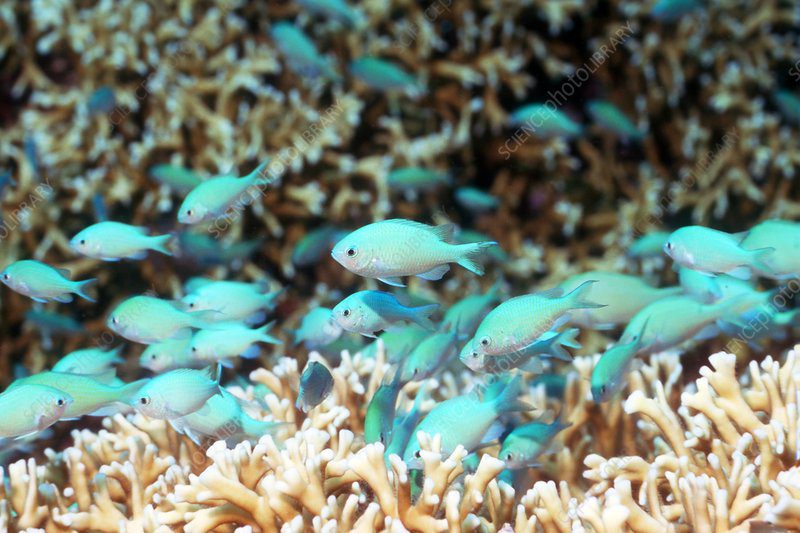
Gender Differences
Regarding gender differences, the Blue Green Chromis does not display any visually distinguishable characteristics. Males and females share similar physical traits, making it challenging to determine their sex solely based on appearance.
Varieties
While the Blue Green Chromis does not have distinct varieties, individual fish may showcase slight variations in colour intensity. Lighting conditions, diet, and genetics can influence these differences.
Grades
The Blue Green Chromis is typically not graded like other fish species in the aquarium trade. However, hobbyists may use subjective terms like “high-quality” or “show-quality” to describe individuals with exceptional colouration and overall appearance.
Behaviour and Temperament
The Blue Green Chromis is known for its peaceful nature, making it an excellent addition to community tanks. These social fish thrive when kept in groups. Placing six or more Blue Green Chromis together in a well-established aquarium will encourage them to engage in schooling behaviour, creating a stunning display of synchronized movement.
Aquarium Requirements
To provide the best care for Blue Green Chromis (Chromis viridis) in your marine aquarium, it is important to consider their specific aquarium requirements. Creating a suitable environment will ensure the health and well-being of these beautiful fish.
Ideal Tank Size and Layout
When setting up an aquarium for Blue Green Chromis, it is recommended to provide a tank size of at least 30 gallons or more. This will allow sufficient swimming space for these active fish. Additionally, their natural behaviour of schooling can be better observed in a larger tank.
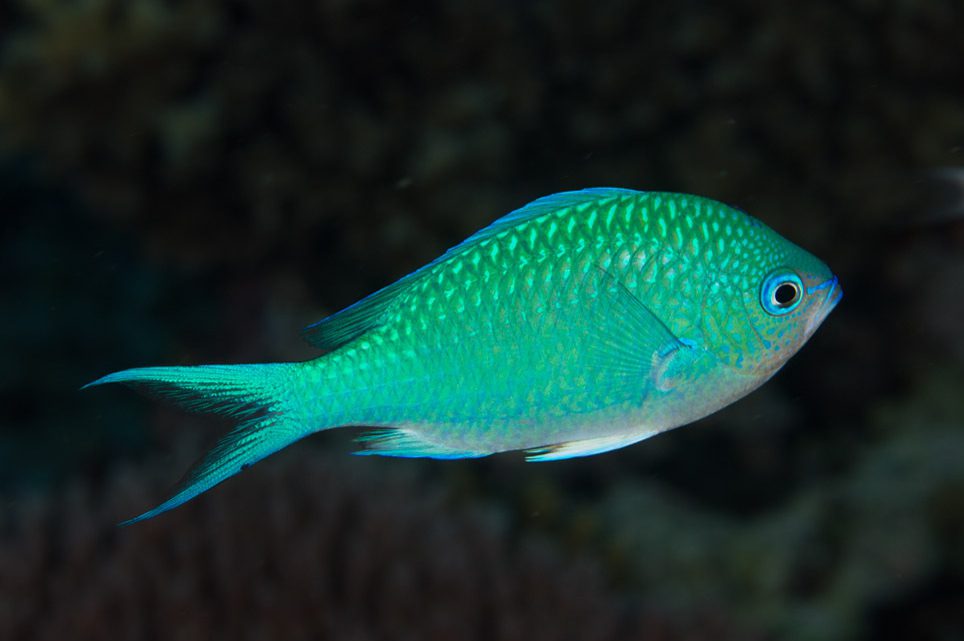
The tank should also have plenty of hiding spots and live rock formations to mimic their natural habitat. This will provide shelter and vertical swimming space for the Blue Green Chromis.
Water Parameters
Blue-green chromis thrive in a saltwater aquarium with specific water parameters. The ideal temperature range is between 72°F and 78°F (22°C to 26°C). The salinity should be maintained at a specific gravity of 1.020 to 1.025, and pH levels should be between 8.1 and 8.4.
It is essential to regularly test the water parameters and adjust as needed to ensure a stable and healthy environment for the Blue Green Chromis.
Suitable Tank Mates and Potential Conflicts
Blue Green Chromis are generally peaceful and can coexist with other marine species. However, when selecting tank mates, caution should be exercised to avoid potential conflicts. Compatible tank mates include other peaceful fish species such as clownfish, gobies, and wrasses. These fish will help create a harmonious community tank environment.
Aggressive or territorial fish should be avoided as they may cause stress or harm to the Blue Green Chromis. Additionally, it is recommended to introduce the Blue Green Chromis as a group rather than as individuals to avoid any dominance issues.
Compatibility with Live Plants and Invertebrates
Blue-green Chromis are typically reef-safe and do not threaten live plants or invertebrates. They can coexist with various coral species and other invertebrates, such as cleaner shrimp and snails. However, caution should be taken as some Chromis may nip at small polyp corals.
It is recommended to closely monitor the Blue Green Chromis’s behaviour and provide ample hiding spots for any vulnerable or sensitive invertebrates.
Care
This section will discuss the care requirements for Blue Green Chromis. It is essential to provide proper care to ensure the health and well-being of these beautiful saltwater aquarium fish. By following best water quality, feeding, and maintenance practices, you can create an optimal environment for your Blue Green Chromis.
Diseases
Blue-green Chromis are generally hardy fish, but like any other marine fish, they can be susceptible to certain diseases. Being proactive in disease prevention and early detection is crucial for keeping your Chromis viridis healthy. By understanding common diseases and their symptoms, you can take appropriate measures to protect your fish.
Diet and Feeding
To ensure the health and vitality of the blue-green Chromis (Chromis viridis), it is crucial to provide them with a balanced and nutritious diet. Understanding their dietary preferences and establishing a suitable feeding routine is essential for their well-being in a saltwater aquarium.
Dietary Preferences
The Blue Green Chromis has omnivorous feeding habits, meaning they consume plant matter and tiny organisms such as plankton in the wild. They prefer small, meaty foods, including brine shrimp, mysis shrimp, and finely chopped seafood.
Recommended Foods and Feeding Schedule
When it comes to feeding Blue Green Chromis in a home aquarium, it is vital to offer a variety of high-quality foods to fulfil their nutritional needs. This can include commercially available frozen or dried foods specifically formulated for marine fish and live or frozen planktonic organisms.
Feeding Blue Green Chromis small portions of food multiple times a day is recommended, replicating their natural feeding patterns. This helps prevent overeating and ensures that they receive an adequate amount of nutrients. A consistent feeding schedule will also help establish a routine and reduce stress.
Tips on Ensuring a Balanced and Nutritious Diet
To ensure a balanced and nutritious diet for Blue Green Chromis, consider the following tips:
- Offer a variety of foods to ensure they receive a wide range of nutrients.
- Avoid overfeeding to prevent obesity and maintain water quality.
- Monitor their eating habits and adjust the feeding schedule accordingly.
- Consider supplementing their diet with vitamin-rich additives appropriate for marine fish.
- Regularly check water parameters to ensure they are within the suitable range for the well-being of the fish.
Breeding and Reproduction
In this section, we will explore the breeding and reproduction of Blue-Green Chromis. Breeding these beautiful saltwater aquarium fish can be a rewarding experience for marine fish enthusiasts. Understanding their breeding behaviour and providing the right conditions can increase the chances of successful reproduction.
Sexing
Sexing Blue Green Chromis is an essential step in the breeding process. Males and females may exhibit slight differences in colouration and size. Males often have more vibrant colours and longer fins compared to females. You can accurately identify the sexes by closely observing their physical attributes and behaviour.
Breeding Behavior and Conditions
Blue Green Chromis are known to engage in group spawning, where multiple males simultaneously court and mate with a single female. To encourage breeding behavior, provide a suitable environment with ample hiding places, such as live rock or caves. Maintaining stable water parameters, including temperature, salinity, and pH, is crucial for successful reproduction.
Care of Eggs and Fry
After spawning, the female Blue Green Chromis will release adhesive eggs that attach to a substrate, such as rock or coral. It is essential to monitor the eggs closely as they develop, ensuring optimal water quality and conditions. The fry, once hatched, can be tiny and vulnerable, requiring a specialized diet of small, nutrient-rich foods.
Challenges in Breeding in Captivity
While breeding Blue Green Chromis can be rewarding, it’s essential to recognize that challenges may arise. Stress, poor water quality, or insufficient hiding places can hinder successful reproduction. Patience, careful observation, and adjustments to the aquarium environment can help overcome these challenges and increase the chances of successful breeding.
Summary
In conclusion, the Blue Green Chromis (Chromis viridis) is a captivating species of saltwater aquarium fish that offers beauty and tranquillity to any marine tank. Its vibrant colours and peaceful nature make it a popular choice among hobbyists and beginners in marine fish care.
We have explored the key aspects of the Blue Green Chromis in this species guide, including its taxonomy and classification, natural habitat and distribution, physical appearance and characteristics, and care requirements. This includes guidance on creating an ideal aquarium setup, choosing suitable tank mates, and providing a balanced diet to ensure their well-being and longevity.
Furthermore, we have delved into the breeding behaviour and conditions for Blue Green Chromis, shedding light on the challenges and rewards of successfully propagating this species in captivity.
Responsible ownership is highly encouraged in adopting the Blue Green Chromis into your saltwater aquarium. Maintaining proper water parameters, providing a suitable environment, and offering a balanced diet can ensure these beautiful fish thrive and bring joy to your marine tank for years.


